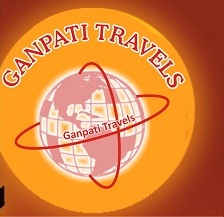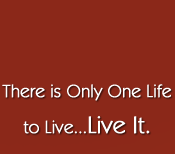Diwali", the festival of lights,
illuminates the darkness of the New Year's moon, and strengthens our close
friendships and knowledge, with a self-realization!

Diwali
is celebrated on a nation-wide scale on Amavasya - the 15th day of the dark
fortnight of the Hindu month of Ashwin, (October/November) every year. It
symbolizes that age-old culture of India which teaches to vanquish ignorance
that subdues humanity and to drive away darkness that engulfs the light of
knowledge. Diwali, the festival of lights even to-day in this modern world
projects the rich and glorious past of India.
Every year on the
dark nights of Diwali the sound of firecrackers announces the celebration of
the favorite festival of Indians. Homes are decorated, sweets are
distributed by everyone and thousands of lamps are lit to create a world of
fantasy. Of all the festivals celebrated in India, Diwali is by far the most
glamorous and important.
Enthusiastically enjoyed by people of
every religion, its magical and radiant touch creates an atmosphere of joy
and festivity. The ancient story of how Diwali evolved into such a widely
celebrated festival is different in various regions and states of India. In
the north, particularly in Uttar Pradesh, Punjab, Haryana, Bihar and the
surrounding areas, Diwali is the day when King Rama's coronation was
celebrated in Ayodhya after his epic war with Ravana, the demon king of
Lanka. By order of the royal families of Ayodhya and Mithila, the kingdom of
which Sita was princess, the cities and far-flung boundaries of these
kingdoms were lit up with rows of lamps, glittering on dark nights to
welcome home the divine king Rama and his queen Sita after 14 years of
exile, ending with an across-the-seas war in which the whole of the kingdom
of Lanka was destroyed.
On the day of Diwali festival, doorways
are hung with torans of mango leaves and marigolds. Rangolis are drawn with
different colored powders to welcome guests. The traditional motifs are
often linked with auspicious symbols of good luck. Oil diyas are arranged in
and around the house. Because of these flickering lamps, the festival has
acquired its name : Dipawali or Diwali meaning 'a rows of lamps'. On this
day, people buy something for the house or some jewelry for the women of the
house. It is auspicious to be buy something metallic, such as silver.
Whatever
may be the fables and legends behind the celebrations of Diwali, all people
exchange sweets, wear new clothes and buy jewelry at this festive time. Card
parties are held in many homes. Diwali has become commercialized as the
biggest annual consumer spree because every family shops for sweets, gifts
and fireworks. However, in all this frenzy of shopping and eating, the
steady, burning lamp is a constant symbol of an illuminated mind.
The
Jain communities of India celebrate Diwali as a New Year's Day. Lord
Mahavira, the founder of Jainism, attained his Nirvana on the day of Diwali.
Sikhs celebrate Diwali to express joy at the return of the sixth Guru to
Amritsar in 1620; Emperor Jahangir had imprisoned him along with 52 Hindu
kings. The Guru was granted freedom but refused to leave until the kings
were also released.
Diwali is by far the most enthusiastically
enjoyed festival in India. People of different nationalities, races,
religions and backgrounds come together to share their joys generating a
feeling of universal brotherhood and inter-religious harmony.
Lakshmi
Puja Diwali marks the end of the harvest season in most of India
and Nepal. Farmers are thankful for the plentiful bounty of the year gone
by, and pray for a good harvest for the year to come. Traditionally this
marked the closing of accounts for businesses dependent on the agrarian
cycle, and the last major celebration before winter. Lakshmi symbolizes
wealth and prosperity, and her blessings are invoked for a good year ahead.
There are two legends that associate the worship of Lakshmi on this day.
According to the first legend, on this day, Lakshmi emerged from
Kshira Sagar, the Ocean of Milk, during the great churning of the oceans,
Samudra manthan. The second legend (more popular in western India) relates
to the Vamana avatar of Vishnu, the incarnation he took to kill the demon
king Bali. Thereafter it was on this day, that Vishnu came back to his
abode, the Vaikuntha; so those who worship Lakshmi on this day, get the
benefit of her benevolent mood, and are blessed with mental, physical and
material well-being.
Chhoti Diwali The day before
Diwali is celebrated as Chhoti Diwali (small Diwali). This is the day when
Hanuman reached Ayodhya to deliver the long-awaited message of Lord Rama’s
return. On Chhoti Diwali, people socialise and exchange sweets and gifts.
There is a puja in the evening, and the puja sthan (most Indian
homes have a special room or corner with a little temple in which they pray)
is decorated with empty earthen lamps and newly purchased idols that are to
be worshipped in it. In Bengal, people celebrate the Kali puja on this day.
Kali is the Goddess of War and is highly revered by the Bengalis. In South
India, an oil massage followed by a bath before dawn on this day is equated
to taking a dip in the holy River Ganga. and a dip in the Ganga (the holy
river of India supposed to absolve one of all sins) on this day is also
considered to be an act of piety.
The Mass Celebration of
Diwali Festival Finally the big day arrives and the excitement
reaches fever pitch, especially for the children, as they can hardly wait
for the night to get their hands on the crackers! But the day itself is not
without its share of delightful moments.
The women of the house
get their culinary act together to turn out an elaborate feast. An extensive
fare is laid out for the household, and certain sweets are especially made
during this festival, as Diwali is also the festival of sweets and feasting.
In the evening, lamps and candles are placed all around the house after
which the entire family assembles for the puja.
A big earthen diya
(lamp) is lit and later taken around the house to light all the candles and
diyas. Every house – big or small – participates in this ritual.
Even the most modest shacks are transformed into bright households with a
few diyas. Every little village and town glitters on this night. The sky is
set ablaze with thousands of crackers bursting and diffusing coloured lights
high into the sky.






 Diwali
is celebrated on a nation-wide scale on Amavasya - the 15th day of the dark
fortnight of the Hindu month of Ashwin, (October/November) every year. It
symbolizes that age-old culture of India which teaches to vanquish ignorance
that subdues humanity and to drive away darkness that engulfs the light of
knowledge. Diwali, the festival of lights even to-day in this modern world
projects the rich and glorious past of India.
Diwali
is celebrated on a nation-wide scale on Amavasya - the 15th day of the dark
fortnight of the Hindu month of Ashwin, (October/November) every year. It
symbolizes that age-old culture of India which teaches to vanquish ignorance
that subdues humanity and to drive away darkness that engulfs the light of
knowledge. Diwali, the festival of lights even to-day in this modern world
projects the rich and glorious past of India.